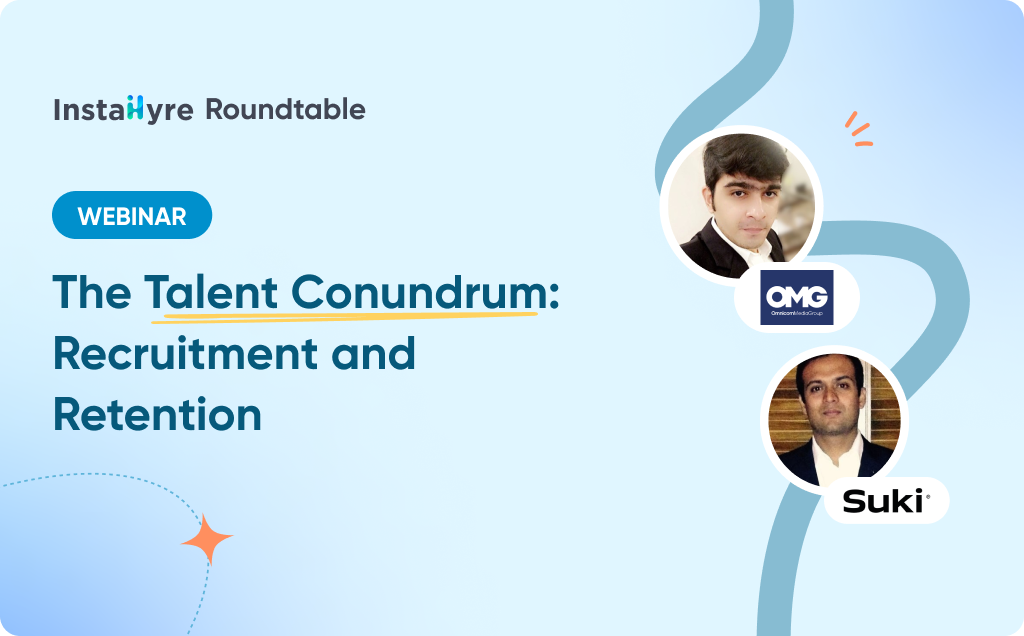<1 min | Posted on 08/07/2021
Breaking the gender bias barrier – How did Sodexo increase it’s gross profit by doing so?
Learn how Sodexo broke the gender bias barrier and significantly increased their gross profit. Explore the steps and initiatives they took to promote gender equality in the workplace.

Table of Contents
What is Gender Bias?
‘Make sure the person you hire can fit in our company’s culture.’ Do you keep getting this as one of the pointers from top management while hiring? Well, while it’s great to have like minded people to work together, if you think about it in the long run, it reduces growth and possibility for innovation.
Take a second, think about it, if you sit down for a discussion and everyone comes up with similar ideas, your ‘out of the box’ idea would also end up being from ‘inside the box’. So, being innovative and having varied opinions will become a difficult task to achieve.
On the other hand, working with people from different backgrounds might initially sound like a challenge but as you go about you will be surprised to see the possibility for growth. Research shows that 43% of the companies with diverse management deliver higher profits. When you hire a diverse workforce every single person will have something new to bring to the table giving you endless opportunities to grow.
Trust us, finding a cultural fit is now an old school concept and as we move forward the more diversity the better. This is also a great opportunity for your employees to learn from each other.
So, next time you hear these words or something similar here’s how you can put forth the idea for hiring a diverse workforce supporting your argument with the example from top companies.
Top companies eliminating Gender bias:
- Sodexo
- Mastercard
- Accenture
- Lenovo
- Microsoft
Sodexo and gender balance
So, this might not come out as an absolute shocker, but a study by Mercer in 2020 done with 1,100 companies showed that globally only 23% of women hold executive positions. While laws promote gender equality in the workplace, several companies have been dragged to court for the same reason. Somehow, companies still struggle to maintain gender diversity, which is one of the biggest challenges. This omits gender bias.
The case might be so because not many corporate setups are prepared to accommodate the needs that support them to reach the top of the funnel. While well aware of the benefits of having gender diversity, the challenges that come with it often make the companies take the safer route. This will help omit gender bias.
So, how did Sodexo turn 17% of the women workforce in 2009 into a whopping 55% in 2020? And not just that, women make up 58% of their board of directors. They have 14 Gender Balance Networks worldwide. And all they did was commit to achieving the goal and set rules to ensure they accommodated people from all genders. This omits gender bias.
From zero tolerance for workplace harassment to self-awareness training programs, Sodexo thrived to achieve the goal. And they did. So, what did it do for the company? Well, the brand image improved by five percentage points, and the gross profit went by 23%. Now, who wouldn’t want those numbers?
Mastercard and bridging generations to omit gender bias
‘It would be better if we hire someone with experience, preferably from the same industry.’ If this is something you think about before hiring well, it’s time you need to think over it. While it’s excellent to employ experienced people as it reduces the effort and time consumed in the training process. But then there’s the flip side of this otherwise safe and great idea, a smaller pool of candidates and technology becoming a pain than a boon. This omits gender bias.
We all would be lying if we said that hiring freshers is terrible for business, won’t we? Currently, Gen Z’s make up 21% of the world’s working-age population, but only 36% of that number is employed. That’s a deficient number considering we all know that the younger generation is quick with technology and comes up with creative solutions to solve modern problems.
But constantly hiring new blood is also not that great; like anything else, there must be balance. There is a bit of challenge regarding baby boomers and technology, but it’s nothing that can’t be resolved. After all, Mastercard overcame that problem and landed a position in the Top 10 of DiversityInc’s 50 Best Companies for Diversity list. This omits gender bias.
So, how did Mastercard create a perfect blend of seasoned and freshers in the organisation? Their staff includes 48% millennials, 40% Gen X and 12% baby boomers. Mastercard is well-known for its diversity, with eight strong Business Resource Groups supporting it to remove gender bias.
To bridge the generational gap, Mastercard has a dedicated group called “YoPros” BRG (the Young Professionals Business Resource Group) that offers a one-on-one ‘Social Media Reverse Mentoring’ program to older employees to make them social media savvy. This is a great initiative and has proven highly successful for Mastercard.
Accenture and broadening horizons
80% to 90% of people with disabilities are unemployed in developing countries; for the developed countries, it remains 50% to 70%. What do you feel when you read these numbers? While there are so many laws promoting companies to hire people with disabilities, the number remains low. The biggest reason is the infrastructural adjustments required.
Many companies find it challenging to accommodate their needs and hence shy away from employing someone who might need a little extra focus. But if you think about it, these adjustments are nothing compared to their positive impact on your business. This omits gender bias.
Accenture is one of the firms that decided to open its doors to everyone with the zeal and passion for working for the company. They are continuously working towards being a company that caters to the needs of all its employees to make them feel equal and respected. No wonder they have a cent per cent score contentmentcent per cent on the Disability Equality Index. “Disability inclusion is personal for me, and I am proud of our work at Accenture.
We set goals, have an action plan and measure our progress. But we also have much more to do.” says the CEO of Accenture, Julie Sweet. Accenture is also highly inclusive of various racial and ethnic backgrounds, veterans, military spouses, and persons with disabilities.
Lenovo and focusing on the spectrum
Just a quarter, yes, only 25% of people who identify themselves from the LGBTQ community stick to their jobs due to the inclusivity policy. But unfortunately, one in every two employees LGBTQ community is subjected to offensive jokes, harassment, and a hostile work environment. This omits gender bias.
The lack of awareness about the community and moral laws to protect and respect their identity often leads to the majority of them staying mum about their orientation and leading an unauthentic life at the workplace. Over the past years, many countries have laid laws to ensure the community feels safe and respected. But the corporate world is still catching up to remove gender bias.
One company is proud and has adjusted to make the employees feel welcome and safe. Lenovo scored 100% in 2017 and 2018 on the Corporate Equality Index, which rates LGBTQ policies and practices to eliminate gender bias.
They have a three-part plan to encourage diversity and inclusion in the workplace- Code of Conduct, Office of Diversity & Inclusion (D&I), and Commitment to Others. Lenovo actively participates in Pride marches, and their StoryHub’s diversity section is bound to make everyone smile. We highly encourage you to check it out https://news.lenovo.com/storyhub/diversity/.
Microsoft and cultural-racial empathy
A study done in Britain in 2016 revealed that over 70% of Asian and Black workers said they had experienced racial harassment in the previous five years. And unfortunately, these numbers are higher in industrialised nations compared to developing countries. The lack of empathy towards culturally and racially diverse people is the primary cause behind the injustice of gender bias.
And though most companies claim to be becoming more accommodating, the employees are yet to experience the same. One company that has been faring well in this aspect is Microsoft. This omits gender bias.
When Satya Nadella became the CEO of Microsoft, one of the changes he wanted to bring to the company’s culture was empathy towards cultural and racial differences among its employees. He strived to resolve the discrimination by not just hiring more people of colour but creating awareness among the existing employees.
He takes a stand whenever there is an injustice, and the company’s annual diversity and inclusion report helps track their progress. He understands the shift will take time but firmly believes it’s achievable. Microsoft currently has 48.9% of its workforce globally from different cultural and racial backgrounds, as per their 2020 report. And we are sure the numbers will continue to rise. This omits gender bias.
Bringing in change is difficult and often involves risk, but one change with zero risk and is sure to reap benefits is breaking the cultural fit and moving to a diverse workforce.
High time that our doors remain open for everyone without any terms and conditions stated or believed. So, what are you waiting for? It’s time to break barriers; next time you hire, make sure there are no ifs and buts except for looking for quality candidates who are passionate about working with you!
More on employer branding
Want to be a part of Exclusive, Invite - only Recruitment events?
Get notified when new stories and insights are released.
You always have the choice to unsubscribe.









